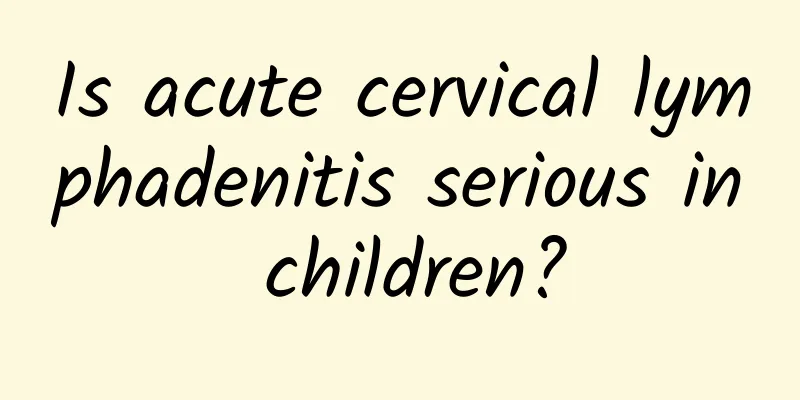Is acute cervical lymphadenitis serious in children?

|
Whether acute cervical lymphadenitis in children is serious depends on the severity of the disease, but it is usually not a life-threatening disease. If a child has a persistent high fever, rapid enlargement of lymph nodes with pain, redness and swelling of the skin, or limited movement, he or she should seek medical attention as soon as possible because there may be a risk of suppuration or bacterial spread. Acute cervical lymphadenitis is usually caused by bacterial or viral infections, such as upper respiratory tract infections, tonsillitis, etc., which cause swollen and painful lymph nodes in the neck. The initial symptoms may be mild lumps on one or both sides of the neck, accompanied by tenderness, which is a normal response of the body's immune system to infection. If the infection is severe, suppurative lymphadenitis may occur, manifested by high fever, abnormal local redness and swelling, or abscess formation. Common causes of the disease include children's underdeveloped immune systems, repeated infections, or direct trauma leading to bacterial invasion. Common pathogens include staphylococci, streptococci, or viruses (such as Epstein-Barr virus). To treat acute cervical lymphadenitis, mild cases can be treated with observation and symptomatic care, such as drinking plenty of water, ensuring adequate rest, and using symptomatic antipyretics as recommended by the doctor. If caused by bacterial infection, antibiotics are often required, such as amoxicillin clavulanate potassium, cephalosporins, or penicillins. In severe suppuration, local puncture or surgical drainage may be required. At the same time, parents should avoid squeezing their children's swollen lymph nodes to prevent the spread of infection or damage to tissues. The key to preventing acute cervical lymphadenitis in children is to enhance immunity and avoid sources of infection, such as teaching children to wash their hands frequently and avoid close contact with sick people. A balanced diet, appropriate increase in outdoor activities and improved living environment (such as keeping indoor air circulation) can also help reduce the occurrence of infection; if a child is found to have recurrent swollen lymph nodes or abnormal symptoms in the neck, be sure to take the child to a pediatrician for a clear diagnosis and treatment. |
<<: What is the cause of the right ovarian cyst? What should women do?
>>: Vaginitis Vaginal skin turns white
Recommend
How to diagnose adnexitis and what tests are needed?
How to diagnose adnexitis and what tests are need...
My period came one week early and I have a little bleeding. What should I do?
My period came one week early and I have a little...
Secondary symptoms of cervical precancerous lesions
Cervical precancerous lesions are relatively comm...
How is vaginal candidiasis caused?
Vaginal candidiasis is a common gynecological dis...
I hope everyone pays attention to the treatment of adnexitis
Adnexitis is a common disease, and the number of ...
What causes dysmenorrhea in women?
Dysmenorrhea refers to pain in the lower abdomen ...
Common symptoms of chronic adnexitis
Female friends must learn more about adnexitis so...
How to effectively prevent chronic cervicitis? Three things you must know about preventing chronic cervicitis
The cervical canal contains glandular cells that ...
Doubt! What are the symptoms of adnexitis?
What are the symptoms of adnexitis? Expert introd...
What foods should I eat if I have cervical warts?
Cervical warts are a very common disease nowadays...
Can hydatidiform mole be detected by ultrasound?
Hydatidiform mole can be detected through B-ultra...
Cervical erosion needs to be carefully differentiated from cervicitis
Cervical erosion is a common lesion in uterine in...
How can we prevent adnexitis?
What is adnexitis? How can we prevent adnexitis? ...
Is it normal for vaginal discharge to be a little light brown? It may be physiological
The change in the color of a woman's vaginal ...
Eating smoked sausage every day can increase your risk of pancreatic cancer
The Chinese New Year is approaching, and many sea...









